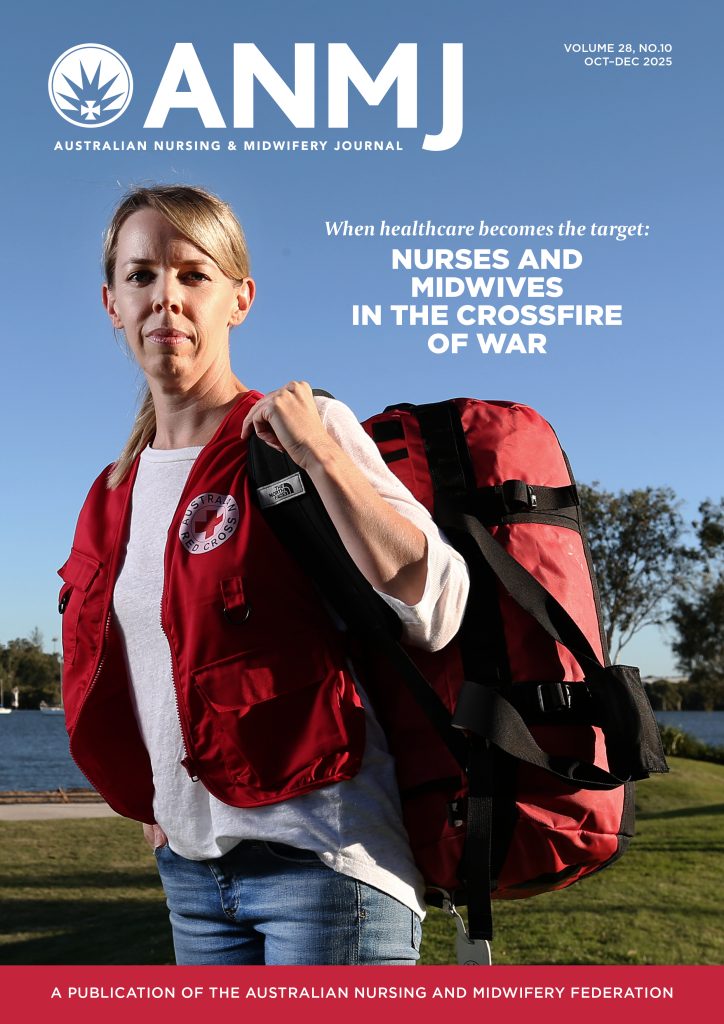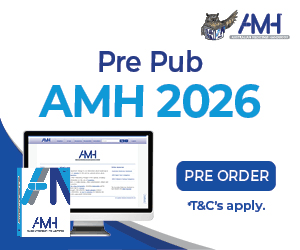Australia’s healthcare system is undergoing scrutiny, facing calls for reform not only to improve patient care but also to address its significant environmental impact. Recent reports highlight how reforming the health workforce, particularly in primary care, could lead to better health outcomes for Australians and contribute to climate action.
The “Unleashing the Potential of our Health Workforce – Scope of Practice Review Final Report,” often referred to as the Cormack Report, was commissioned to reform Australia’s primary care workforce with the goal of delivering high-quality, equitable, integrated, and sustainable healthcare (1). The report found significant inefficiencies in the health system, particularly stemming from barriers that prevent health professionals from working to their full scope of practice and inhibit multidisciplinary teams from providing collaborative care. It identified a “substantial ongoing issue” where large parts of the primary care workforce are prevented from providing full scope care consistent with their competence.
Preventative health and emissions reduction
So how do these health system inefficiencies relate to climate change? Estimates show that Australia’s health system greenhouse gas emissions were 23.522 Mt CO2-e in 2021-22, representing 5.44% of Australia’s total emissions (2).
The majority of these emissions come from
- Health Care Services (59%),
- Residential Care and Social Assistance Services (33%),
- Human Pharmaceutical and Medicinal Product Manufacturing (8%).
Most emissions are classified as Scope 3 (68%) – primarily from purchased goods and services, followed by Scope 2 (20%) from purchased energy, and Scope 1 (7%) fromdirect emissions. Patient travel also contributes (6%) (2).
Many models demonstrate that greenhouse gas emissions from healthcare predominantly originate from the acute sector (hospitals) (3). This includes emissions from energy use in large facilities, as well as the supply chains for goods and services used in intensive care settings. Additionally, pharmaceuticals and medicinal product manufacturing represent a notable portion of the carbon footprint, accounting for 8% of the total health system emissions.

Crucially, preventative health is identified not only as a key mechanism for reducing hospitalisation, which improves patient health outcomes, but also for the potential to lower emissions by preventing illnesses from worsening (4). The current dominant biomedical model focuses on diagnosing and treating diseases, often neglecting contributing factors like environmental issues, poor nutrition, lack of housing, and poverty (often collectively referred to as determinants of health). In contrast, a socialised model of healthcare – championed by some nurses – seeks to address the cause of illness and aligns with increasing calls for systemic health reform (5). Enabling early intervention and reducing acute admissions may simultaneously improve health outcomes and lower carbon emissions.
Example – Chronic Wounds in Australian Primary practice
Consider the example of venous leg ulcers (VLUs), a common chronic wound problem managed in Australian primary care. Clinical practice guidelines recommend vascular assessment, such as Ankle Brachial Pressure Index (ABPI) measurements, and compression therapy as primary interventions for managing VLUs (6). Implementing evidence-based practices in wound management has been shown to lead to health improvement and significant cost savings (6).
Despite these guidelines, vascular assessments are not routinely performed in many primary care settings, partly due to a lack of awareness of the clinical practice guidelines among clinicians (6). Furthermore, nurses, who are often involved in wound care, encounter barriers. While General Practitioners (GPs) may seek their advice, nurses report limitations in diagnosing, prescribing, and directly managing wound care in these instances (6). The cost of suboptimal VLU treatment is substantial, to both the patient and healthcare expenditure. Venous leg ulcers represent the most common chronic wound problem managed in Australian primary care, with the current estimated health cost being AUD $3 billion and increasing, partly due to rising rates of diabetes and obesity.

When patients receive suboptimal primary care treatment for conditions like VLUs, it can lead to complications and the need for hospitalisation. Hospital stays, often involving multiple weeks of intensive treatment including antibiotics and complex wound care (7), may potentially have been avoided if primary care interventions were more effective. This hospitalisation directly contributes to the high emissions from the acute sector, increased energy use, and pharmaceutical consumption.
Nursing and Midwifery – Effective Health Reform
The seven-point plan for immediate effective health reform, proposed by a unified group of peak nursing and midwifery bodies offer solutions that align with the Cormack Report’s findings and could contribute to addressing both health and climate challenges. These actions advocate for:
- Enable Nurse Practitioners and Endorsed Midwives to directly refer patients to relevant specialists, reducing waiting times for care.
- Introduce funding and regulatory reforms that support nurse and midwife-led clinics and innovative care models, particularly in rural, remote, and underserved communities, enabling nurses and midwives to take leadership roles in delivering community-based primary care.
- Work with State and Territory Governments to pass laws to support qualified Registered Nurses in every State and Territory to prescribe approved medications under the Pharmaceutical Benefits Scheme.
- Increase the Workforce Incentive Payment Practice Stream to cover up to seven healthcare professionals and tie payments to higher scope clinical care.
- Authorise Nurse Practitioners, Endorsed Midwives and qualified Registered Nurses to order diagnostic tests such as mammograms, X-rays and DEXA scans. For Endorsed Midwives, this includes tests such as NIPT, pelvic ultrasound, multiple pregnancy items and iron studies.
- New and amended Medicare Benefit Schedule items for Endorsed Midwives to support pre-conception counselling, primary sexual and reproductive health, intrapartum care outside of a hospital setting (homebirth), and a general consult item for women’s health.
- Implement a primary healthcare workforce development strategy to unlock 15,000 extra education and training places for Registered Nurses, Nurse Practitioners and midwives in the places and settings that need them most.
These actions seek to remove systemic barriers – such as restrictive funding models – and support full scope of practice. Nurse-led clinics are particularly suited to managing chronic conditions and deliver comprehensive, patient-centred care – key to both advancing health equity and emissions reduction. Enabling nurses and other primary care professionals to work to their full scope, provide direct referrals, and lead innovative care models, creates the conditions for a health system that prioritises prevention, early interventions, and integrated community-based care.
Looking to the future
Reforming the primary care workforce is not just about health system efficiency – it is a moral imperative grounded in health equity, sustainable and evidence-based care. Enabling health professionals to work to their full scope, investing in preventative care, and reducing avoidable hospitalisation can help build a more resilient, and responsive healthcare system. As climate and health strategies begin to intersect more intentionally, workforce reform may emerge as one of the most impactful levers for reform.
References
1. Australian Government Department of Health and Aged Care. Unleashing the Potential of our Health Workforce – Scope of Practice Review Final Report 2024 [Available from: https://www.health.gov.au/resources/publications/unleashing-the-potential-of-our-health-workforce-scope-of-practice-review-final-report?language=en.
2. Australian Government Department of Health and Aged Care. Estimates of Australian health system greenhouse gas emissions 2021–22 2025 [Available from: https://www.health.gov.au/resources/publications/estimates-of-australian-health-system-greenhouse-gas-emissions-2021-22?language=en.
3. Malik A, Lenzen M, McAlister S, McGain F. The carbon footprint of Australian health care. Lancet Planet Health. 2018;2(1):e27-e35.
4. Australian Government Department of Health and Aged Care. National Health and Climate Strategy Implementation Plan 2024–2028. 2024 [Available from: https://www.health.gov.au/resources/publications/national-health-and-climate-strategy-implementation-plan-2024-2028.
5. Australian College of Nursing. Achieving a socialised model of healthcare in Australia with nurse leadership [White paper]. 2025 [Available from: https://www.acn.edu.au/wp-content/uploads/white-paper-achieving-a-socialised-model-of-healthcare-in-australia-with-nurse-leadership.pdf.
6. Weller CD, Richards C, Turnour L, Patey AM, Russell G, Team V. Barriers and enablers to the use of venous leg ulcer clinical practice guidelines in Australian primary care: A qualitative study using the theoretical domains framework. International Journal of Nursing Studies. 2020;103:103503.
7. Weller CD, Richards C, Turnour L, Team V. Patient explanation of adherence and non-adherence to venous leg ulcer treatment: a qualitative study. Frontiers in pharmacology. 2021;12:663570.








